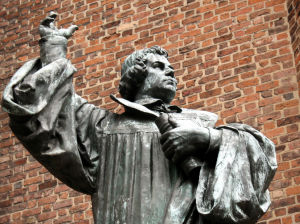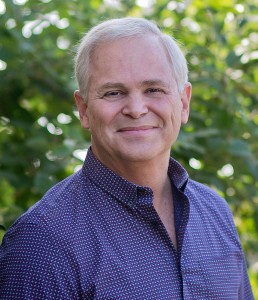 I hope you’re finding this adventure worthwhile.
I hope you’re finding this adventure worthwhile.
If you’re like me (and many others), the process of learning to love the lost is like a roller coaster. One day you’re high, then the next day reality strikes and you’ve got everyday junk to deal with, so you’re back to the ground. This is part of why prayer is so important.
If you’re feeling like giving up, guess who’s pushing for that?
For our struggle is not against flesh and blood, but against the rulers, against the authorities, against the powers of this dark world and against the spiritual forces of evil in the heavenly realms. (Eph. 6:12)
Don’t give up!
Please take a minute to pray, asking God to give you an undistracted fifteen minute window to speak to you just now, as you read.
Working ON Your Ministry
Michael Gerber, in his seminal work, The E Myth, writes that the most important action an executive can take is to work on the business, not just in the business. The same is true in ministry. It’s easy to get so caught up in doing ministry that we neglect to build the ministry. The purpose of my letters is to help you build momentum in your church by working more on your ministry, rather than just in your ministry.
Over the next few emails, I want to help you begin to build some systems that will sustain and increase the momentum in your church.
Momentum Builds
Momentum starts with the Holy Spirit and you, it moves to your leaders, then lodges in the hearts of your congregation. Once that happens, it becomes tangible and concrete when it touches the community around you.
Everything we’ve begun doing so far is designed to build up latent momentum in you and your church. “Latent” is a scientific word for “pent-up.” As you are praying, your heart is breaking (also, enlarging). As you’re sharing with your people and studying with your leaders, their hearts are breaking and enlarging too.
As you preach how much God cares for those who are not yet part of his family, your congregation will begin to want to do something more than attend church and care for each other. They’ll want to do something to reach their friends, neighbors, and community. Wouldn’t it be great if they were pushing you to do outreach, rather than you having to push them? I think it can happen. Your prayers, preaching, and personal example are powerful tools for motivating members to love the lost.
The Third Sermon
Let’s talk about the third sermon in your Capturing God’s Heart series.
Come and See
In John 4, Jesus meets an extraordinary woman. She has a damaged past and a dubious present. During their short conversation, the woman decides that Jesus is the Messiah. What should she do about this?
John 4:28-29 says, “Then, leaving her water jar, the woman went back to the town and said to the people, ‘Come, see a man who told me everything I ever did.’ They came out of the town and made their way to him.”
This woman doesn’t have a lot of education. (Though she’s got a lot of reputation because of her past.) She’s only been a Christ-follower for a few minutes. How can she articulate her new-found faith? She uses two verbs: “Come.” And, “See.”
Over the years I have taught my people half a dozen evangelistic strategies. This one is the simplest: Come and see.
It’s the same approach used by Philip on the day he meets the Lord. “‘Come and see,’ said Philip.” (John 1:46b)
This is your third sermon for your Capturing God’s Heart series. Ask your people to invite their friends to “come and see.” As you conclude the content portion of the sermon, cast vision for what could happen if each one of them invited a friend to a relevant series that introduced them to Jesus. (Wow! Just the thought of that gets me excited.)
Tell your folks how much God loves those who are yet-outside his family, and what the Lord has been doing in your heart. Tell them about how you’ve been praying for lost people in nearby cars while you’re at stoplights, or in line at grocery stores. Remind them that they have never locked eyes with someone who doesn’t matter to God. And that everyone they know is only one prayer away from an eternal relationship with Christ.
Then ask them to pray. Pray for lost neighbors, co-workers, fellow students, etc. Give them a time period – maybe “seven friends for seven weeks”. While they’re doing that, you pray for your congregation to become inviters. Somewhere in there, show them Colossians 4:4 and ask them to pray for you.
Here’s what your series might look like:
- Becoming Fishers of Men (Matthew 4:18-22)
- The Day of Good News (2 Kings 6,7)
- Come and See (John 4)
If you’d like to make it a four week series, you could begin by preaching my favorite sermon, which is called, The Prodigal Father (from Luke 15). Or, you could insert it as week two or three. There’s no special order, you just want to expose your people to God’s heart, from Scripture, for the lost.
Taking Action
Assignment 1
Decide what messages you want to preach in your series on Capturing God’s Heart.
Assignment 2
Confirm the dates of your series and bring your staff up to speed.
Assignment 3
Fast again and continue to ask God to show you what he wants to do in your church.
1,000 blessings!
Hal
Need to Catch Up?
Get the lessons you missed here:
- Why Some Pastors Make a Bigger Difference
- The Prayer that Changes Everything
- You are Not Alone when Hearts are Cold

Hal Seed is the founding and lead pastor of New Song Community Church in Oceanside, California. Get more resources and equipping for leading a better church at PastorMentor.com.
If a friend forwarded this email to you, you can sign up to get all eleven free Momentum Bootcamp lessons delivered to your inbox.
Related: Do you want to reach your community and grow your church?